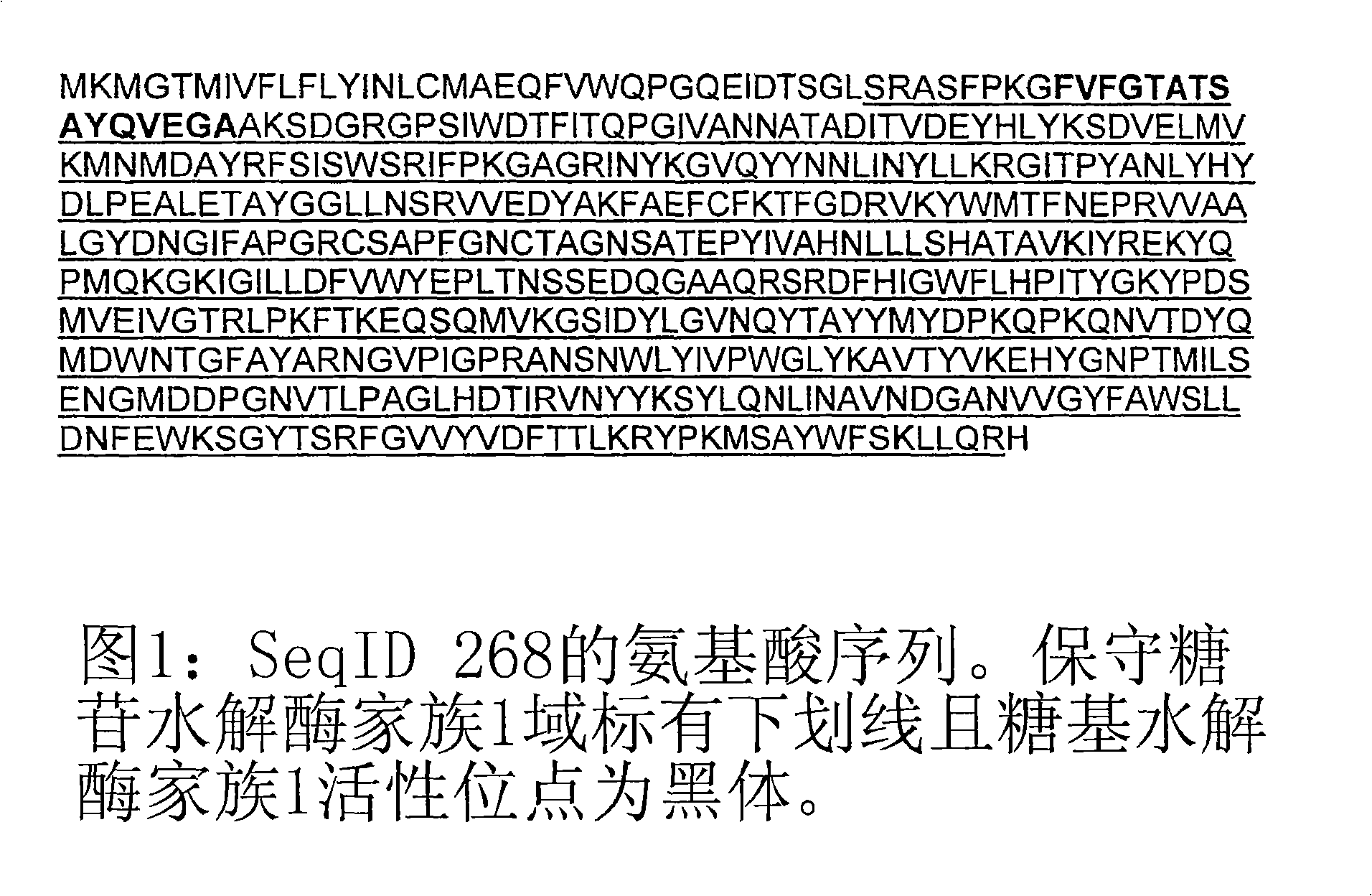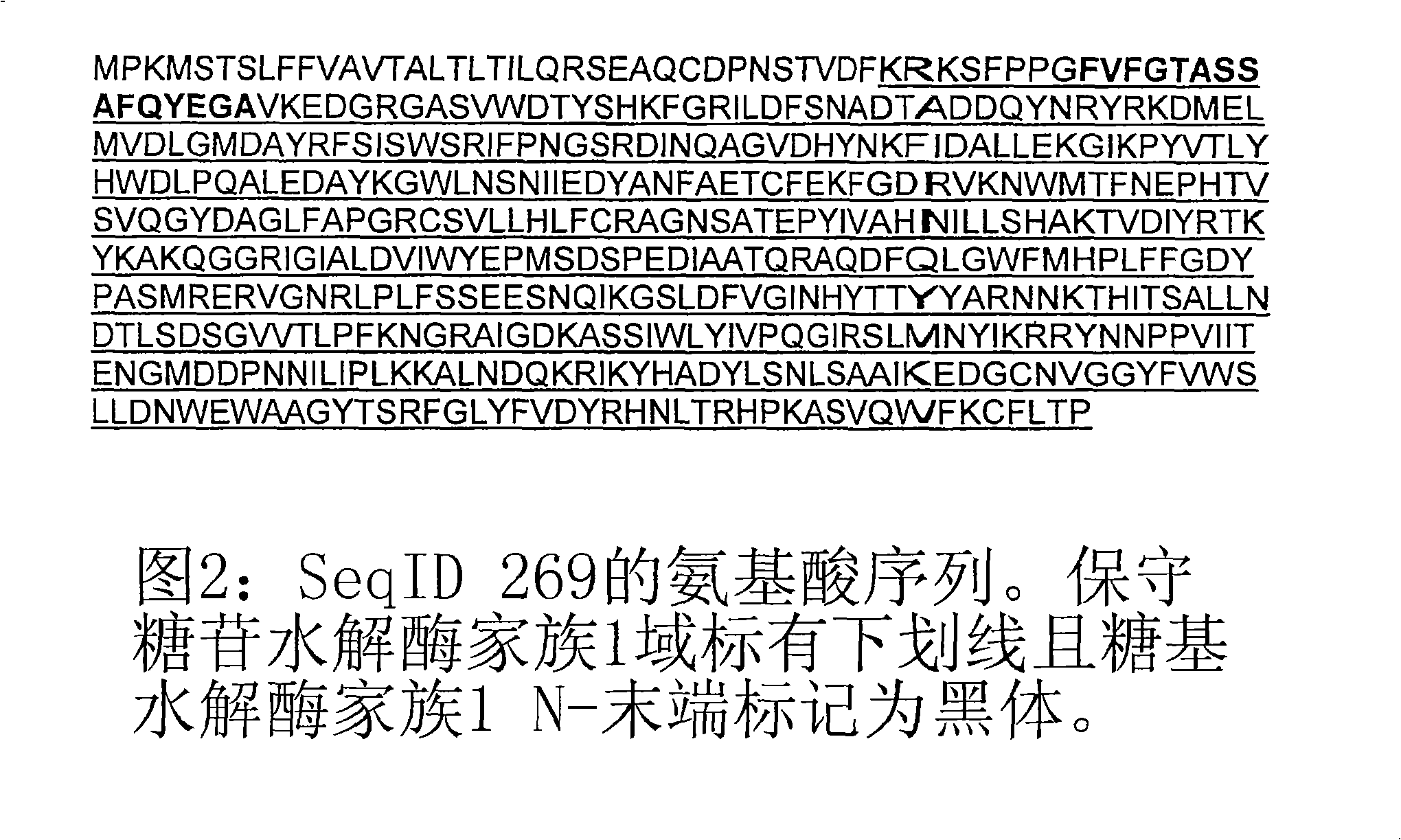Compositions and methods for modulating lignin of a plant
A technology for plants and transgenic plants, applied in the field of compositions and methods for regulating plant lignin, capable of solving problems such as inability to distinguish genes of the same family
- Summary
- Abstract
- Description
- Claims
- Application Information
AI Technical Summary
Problems solved by technology
Method used
Image
Examples
example 1
[0474] Example 1 illustrates how monolignol synthesis, monolignol transport, and lignin polymerization genes and lignin-like monolignol synthesis, monolignol transport, and lignin polymerization genes were isolated and characterized in Eucalyptus grandis and radiata pine.
[0475] Total RNA was extracted from plant tissues (using the protocol of Chang et al., Plant Mol. Biol. Rep. 11:113-116 (1993)). Plant tissue samples were obtained from phloem (P), cambium (C), extended xylem (X1) and differentiated and lignified xylem (X2).
[0476] Use Poly(A)Quik mRNA Isolation Kit (Stratagene, La Jolla, CA) or Dynal Beads Oligo(dT) 25 (Dynal, Skogen, Norway) mRNA was isolated from total RNA preparations. A cDNA expression library was constructed from purified mRNA by reverse transcriptase synthesis, and the resulting cDNA clones were inserted into lambda ZAP using the ZAP Express cDNA Synthesis Kit (Stratagene) according to the manufacturer's protocol used. The resulting cDNA was pack...
example 2
[0484] To identify 5' or 3' extra sequences of partial cDNA sequences in the cDNA library, rapid 5' and 3' amplification of cDNA ends (RACE) was performed using the SMART RACE cDNA Amplification Kit (Clontech Laboratories, Palo Alto, Calif.). The required method typically first isolates poly(A) mRNA, performs first and second strand cDNA synthesis to generate double-stranded cDNA, truncates the cDNA ends, and then ligates SMART RACE adapters to the cDNA to form the adapter-adapted junctions. Sub-ds cDNA library. Gene-specific primers were designed for use in 5' and 3' RACE reactions with adapter-specific primers. Using 5' and 3' RACE reactions, 5' and 3' RACE fragments were obtained, sequenced and cloned. This method was repeated until the 5' and 3' ends of the full-length gene were identified. Full-length cDNA can be generated by PCR using primers specific for the 5' and 3' ends of the gene due to end-to-end PCR.
[0485] For example, to amplify a missing 5' region of a ge...
example 3
[0500] Example 3 illustrates a procedure for RNA extraction and purification, which is especially applicable to RNA obtained from conifer needles, xylem, cambium and phloem.
[0501] Tissues are obtained from conifer needles, xylem, cambium or phloem. Tissues were frozen in liquid nitrogen and pulverized. Total RNA was extracted using Concert Plant RNA Reagent (Invitrogen). The resulting RNA samples were extracted into phenol:chloroform and treated with DNase. The RNA was then incubated at 65°C for 2 minutes, followed by centrifugation at 4°C for 30 minutes. After centrifugation, RNA was extracted into phenol at least 10 times to remove contaminants.
[0502] RNA was further washed using RNeasy columns (Qiagen). Purified RNA was quantified using RiboGreen reagent (Molecular Probes) and the purity was assessed by gel electrophoresis.
[0503] RNA was then amplified using MessageAmp (Ambion). Aminoallyl UTP and free UTP were added to in vitro transcripts of purified RNA at...
PUM
 Login to View More
Login to View More Abstract
Description
Claims
Application Information
 Login to View More
Login to View More - R&D
- Intellectual Property
- Life Sciences
- Materials
- Tech Scout
- Unparalleled Data Quality
- Higher Quality Content
- 60% Fewer Hallucinations
Browse by: Latest US Patents, China's latest patents, Technical Efficacy Thesaurus, Application Domain, Technology Topic, Popular Technical Reports.
© 2025 PatSnap. All rights reserved.Legal|Privacy policy|Modern Slavery Act Transparency Statement|Sitemap|About US| Contact US: help@patsnap.com



